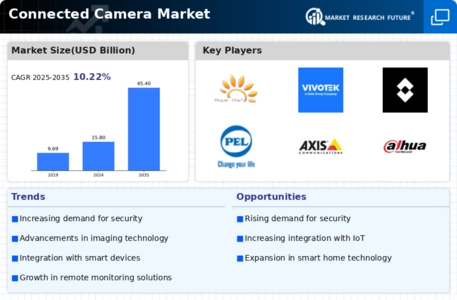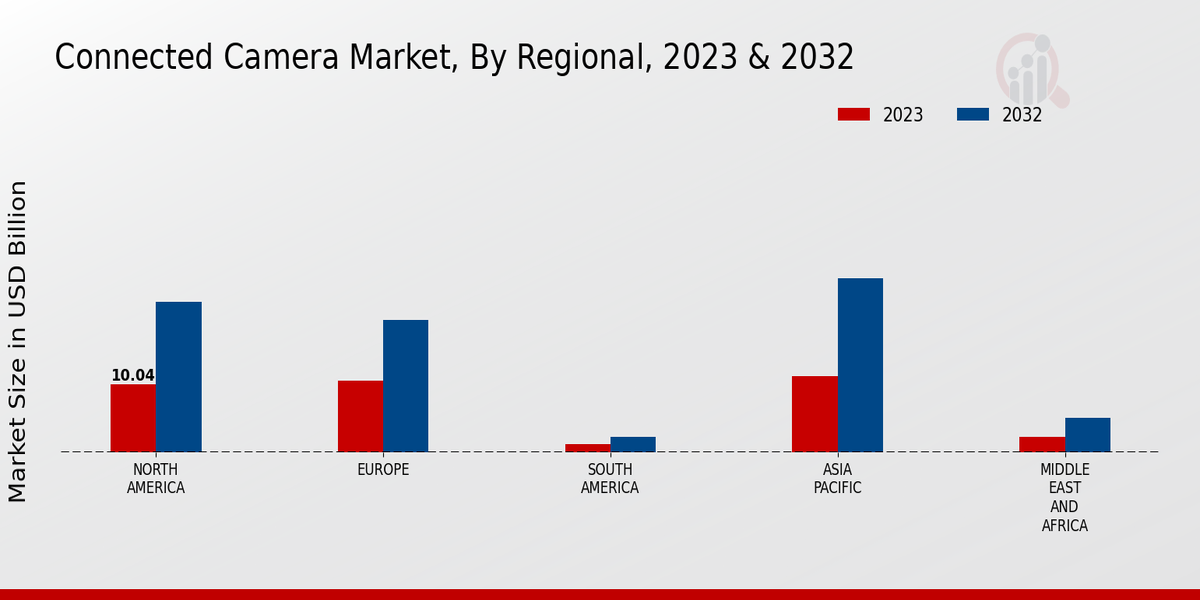Growth of Smart Cities
The development of smart cities significantly influences the Global Connected Camera Market Industry. Urban planners increasingly incorporate connected cameras into city infrastructure to enhance public safety and streamline traffic management. These cameras provide valuable data for city officials, enabling them to make informed decisions regarding urban development and resource allocation. As cities worldwide embrace smart technologies, the demand for connected cameras is likely to surge. This trend aligns with the projected market growth, with estimates indicating a rise from 15.8 USD Billion in 2024 to 45.4 USD Billion by 2035.
Technological Advancements
The Global Connected Camera Market Industry is experiencing rapid technological advancements, particularly in artificial intelligence and machine learning. These innovations enhance image processing capabilities and enable features such as facial recognition and real-time analytics. For instance, cameras equipped with AI can automatically adjust settings based on environmental conditions, improving overall image quality. As a result, the market is projected to grow from 15.8 USD Billion in 2024 to 45.4 USD Billion by 2035, reflecting a robust demand for smart surveillance solutions across various sectors.
Market Growth Visualization
Increased Internet Connectivity
Enhanced internet connectivity plays a crucial role in the expansion of the Global Connected Camera Market Industry. The proliferation of high-speed internet and the rollout of 5G technology facilitate seamless data transmission and real-time monitoring capabilities. This improved connectivity allows users to access camera feeds from anywhere, significantly enhancing the functionality of connected cameras. As internet infrastructure continues to improve globally, the demand for connected cameras is expected to rise correspondingly. This trend aligns with market projections, indicating a growth from 15.8 USD Billion in 2024 to 45.4 USD Billion by 2035.
Rising Demand for Security Solutions
The increasing need for security solutions drives growth in the Global Connected Camera Market Industry. Organizations and individuals alike prioritize safety, leading to heightened investments in surveillance systems. This trend is particularly evident in urban areas, where crime rates necessitate advanced monitoring technologies. The integration of connected cameras into smart home systems further fuels this demand, as consumers seek comprehensive security solutions. As the market evolves, it is expected to witness a compound annual growth rate of 10.09% from 2025 to 2035, underscoring the urgency for enhanced security measures.
Consumer Adoption of Smart Home Devices
The rising consumer adoption of smart home devices is a pivotal driver for the Global Connected Camera Market Industry. As households increasingly integrate smart technologies, connected cameras become essential components of home security systems. This trend is evident in the growing popularity of devices that offer remote monitoring and control via smartphones. The convenience and peace of mind provided by these cameras appeal to a broad consumer base, leading to a projected market expansion. The anticipated growth trajectory suggests a compound annual growth rate of 10.09% from 2025 to 2035, reflecting the ongoing shift towards smart living.

















